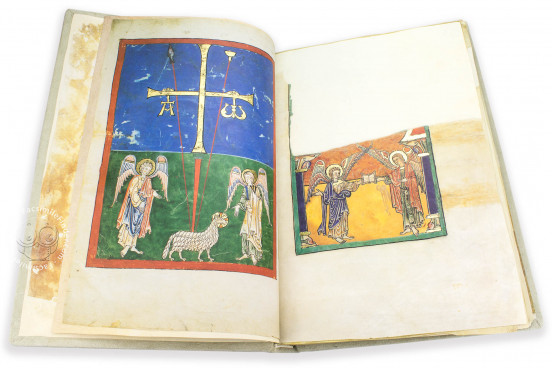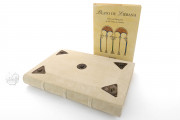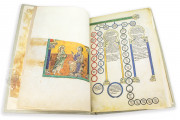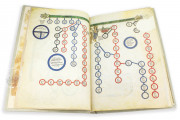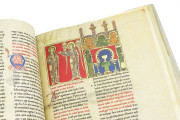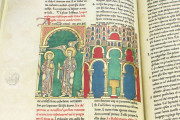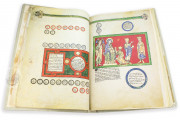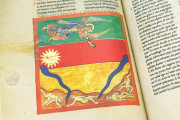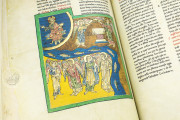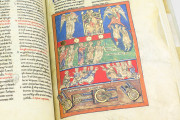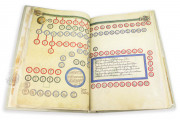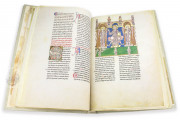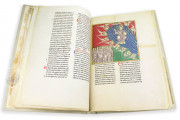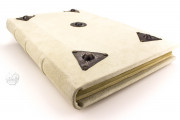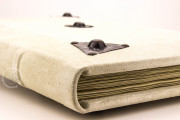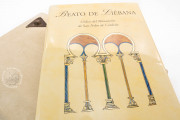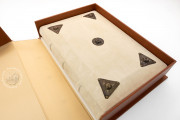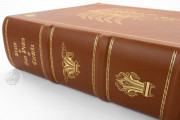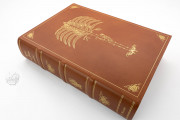The Cardeña Codex, a manuscript of the Christian biblical book of the Apocalypse with commentary by Beatus of Liébana, was created in Castile around 1180. It owes its nickname to a claim that the portion in the Museo Arqueológico Nacional came from San Pedro de Cardeña near Burgos. Although only partially preserved with its leaves scattered in four collections, it boasts twenty-six miniatures prefacing and illustrating the Apocalypse. These are painted by two artists in distinct styles. Both painters created lively scenes in bold colors and gold.
The Cardeña Codex is part of a group of twenty-seven illustrated commentaries on the Book of Apocalypse by Beatus of Liébana, a monk who lived in the Kingdom of Asturias, Spain, until ca. 800.
Iconographical Content
The comprehensive iconographical program of the codex encompasses the Preliminaries (featuring the Cross of Oviedo, the four Evangelists, and Genealogies), the Revelation to St. John with accompanying commentary, and the Tables of the Antichrist. The 51 extant miniatures exemplify extraordinary beauty and testify to the exceptional skill, nuance, and precision of the artists.
Artistic Characteristics
The manuscript exhibits a distinctive aesthetic characterized by both meticulously rendered figures and vibrant, intense background colors, all lavishly embellished with gold leaf. Its striking palette of red, blue, and green tones, complemented by solid gold leaf on haloes and architectural elements, enhances its luxurious appearance.
Stylistic Influences
The illumination shows clear influences from insular art traditions while subtly evoking elements of Carolingian artistry. This sophisticated visual language perfectly complements the text transcribed by skilled copyists.
_____
For more information on the Beatus model, read our blog article by Amy R. Miller (PhD, Medieval Art History, University of Toronto).
We have 1 facsimile edition of the manuscript "Beatus of Liébana - Cardeña Codex": Beato de Liébana, códice del Monasterio de San Pedro de Cardeña, Burgos facsimile edition, published by M. Moleiro Editor, 2000
Request Info / Price
